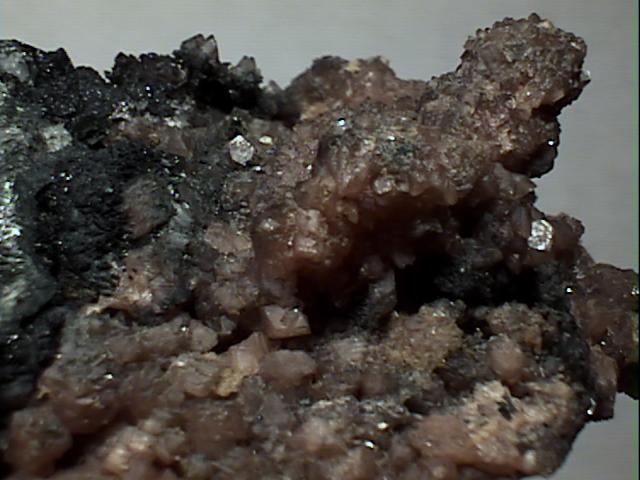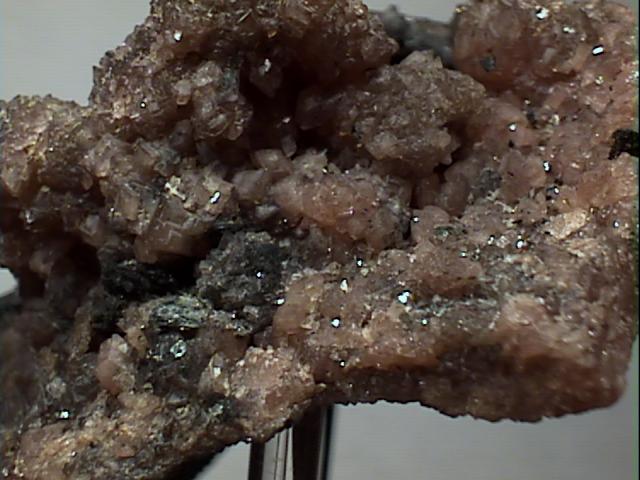 THE MINERAL HUREAULITE
THE MINERAL HUREAULITE
- Chemistry: Mn5(PO4)2(PO3{OH})2 - 4H2O, Hydrated Manganese Phosphate Hydroxide.
- Class: Phosphates
- Uses: Only as mineral specimens.
Specimens
Hureaulite's chemistry is unusual in that it has the unusual ion group of PO3{OH}. This group is the same as the regular phosphate ion group except that one of the four oxygens is replaced by an hydroxide or OH group. Sometimes the formula for hureaulite is written as Mn5H2(PO4)4 - 4H2O. The mineral sainfeldite is similar, but with arsenate as the affected ion group.
PHYSICAL CHARACTERISTICS:
- Color is mostly pink, but also found in shades of gray, yellow, red or brown.
- Luster is vitreous.
- Transparency: Crystals are transparent to translucent.
- Crystal System is monoclinic; 2/m
- Crystal Habits include small prismatic crystals with slanted pinacoidal faces sometimes in radiating clusters.
- Cleavage is absent.
- Fracture is uneven
- Hardness is 5
- Specific Gravity is approximately 3.2 (slightly above average for translucent minerals)
- Streak is white.
- Associated Minerals are elbaite,
reddingite , rockbridgeite,phosphoferrite and other secondary phosphates. - Notable Occurrences include Mesquitela Quarry, Portugal; Rio Grande do Norte-paraiba, Brazil; Palermo Mine, North Groton, New Hampshire and San Diego, California, USA and from where it gets its name, Hureaux, France.
- Best Field Indicators are color, locality, associations and crystal habit.



